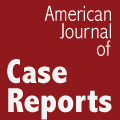Get your full text copy in PDF
Rafał Nikodem Wlazeł, Zofia Helszer, Bogdan Kałużewski
Med Sci Tech 2007; 48(1): RA19-22
ID: 881544
Introduction: The etiopathogenesis of Prader-Willi syndrome (PWS) and of Angelman syndrome (AS) has an epigenetic character, including microdeletions, uniparental disomy, disturbance of genomic imprinting and point mutations in 15 q 11-13 region, referred to as PWACR region (Prader-Willi Angelman Critical Region). PWACR region is characterized by a specific and dependent on parental origin pattern of DNA methylation. The methods of molecular cytogenetics play an important but rather limited role in the diagnostics of the two above-mentioned syndromes. The approach, practised in the majority of laboratories, is based on the strategy, in which methylation analysis is the firststep. Material and methods: In this paper, standardisation of two alternative tests has been performed, defining the pattern of PWACR region sequence methylation, based on PCR technique: MS-PCR (Methylation specificPCR)andRFLP-PCR (Restriction Fragment Length Polymorphism). The analysis comprised DNA from patients with suspected PWS and AS, from patients with diagnosed PWS and AS and from healthy persons. Results: The results of both tests for particular patients were comparable and, in case of the patients with PWS/AS, they confirmed previous diagnosis. Conclusions: The results demonstrate a possibility to use the described tests as the first stage of total routine diagnostics of these syndromes. (Clin Exp Med Lett 2007; 48(1):19-22)
Keywords: Prader-Willi/Angelman syndrome, Methylation, bisulfiterestrictionanalysis



